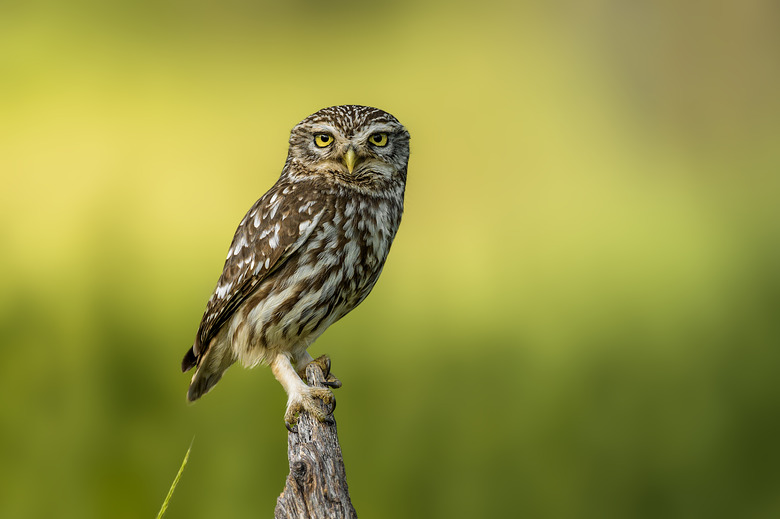Birds That Sound Like Owls
Owls boast some of the most distinctive calls in the bird world: from the intimidating, deep-chested hoot of the great horned owl to the ghostly whinnies of the eastern screech-owl and the crazy braying of the barred owl.
Given most species are mainly active after dark and tend to hunker down in well-camouflaged cover during the day, you hear owls more often than you see them. This, along with the fact that owl vocalizations are quite varied, makes it all the easier to confuse the owl-like noises of certain other birds – from doves cooing to a snipe on the wing – for the real deal.
Hooting Coos, Cooing Hoots: Doves and Pigeons
Hooting Coos, Cooing Hoots: Doves and Pigeons
Perhaps the standout birds that sound like owls are members of the dove family (including pigeons), whose soft hoots and murmurs are certainly reminiscent of the big-eyed birds of prey.
For example, the classic mourning dove sound – a rhythmic hoot-like coo – definitely sounds a bit owlish, but with just a little experience it's straightforward to distinguish it.
Among the other leading candidates for confusion might be the band-tailed pigeon, a big West Coast relative of the familiar rock pigeon that produces a hoot deep enough to mistake even for a horned owl's, as well as the jerky coo of the white-winged dove of the Southwest, vaguely similar to the voice of the Mexican spotted owl that shares part of its range.
The Tailfeather Rush of the Wilson’s Snipe
The Tailfeather Rush of the Wilson's Snipe
You're not likely to mistake the harsh calls of the Wilson's snipe – a shorebird in the same family as sandpipers and the American woodcock – for an owl. The potential confusion comes with the flight display the male snipe performs to attract females.
The male dives from on high while fanning his tail feathers, the flow of air over which makes a winnowing sound. That winnowing is quite similar to the trill of an eastern screech-owl or a boreal owl, and given male snipes make these breeding flights at night as well as during the day, it's not uncommon to be fooled.
Fellow "Night Owls": Nightjars
Fellow "Night Owls": Nightjars
The calls of certain North American nightjars could conceivably be mistaken for an owl's, given these secretive, mottled insect-hunting birds are also mainly nocturnal and can be quite vocal after-hours. In fact, the three nightjars presented here are all named after their calls.
The whip-poor-will provides one of the classic critter noises of summer nights in the central and eastern U.S. with its quavering trill, while the bigger Chuck-will's-widow of the Southeast makes a roughly similar call. The western nightjar known as the common poorwill whistles its name at night.
An untrained ear could possibly confuse these nightjar songs for a screech-owl's, but it's easy to learn to distinguish them. Besides the differences in tone and pattern, all three of these nightjars are liable to call repeatedly – sometimes for hours on end – which their owl neighbors are unlikely to do.
Other Birds That Sound Like Owls: Jays
Other Birds That Sound Like Owls:
Jays
It's worth noting potential auditory confusion connected to an exceptionally widespread owl with a voice well outside the bounds of what we tend to think of as a stereotypical owl call: the barn owl, which ranges year-round across most of the Lower 48 states, part of an enormous global distribution.
Barn owls – which come in a ghostly pale hue and, as their name suggests, often roost in lightly used or abandoned outbuildings – don't hoot, murmur or whinny. Instead, their loudest, most obvious call is a harsh, raspy screech of a couple of seconds' duration.
The birds whose vocalizations might land closest to this rather freaky scream are likely certain jays, such as the Steller's jay of western North America, which unleashes a somewhat similar screech in addition to its classic staccato "shook-shook-shook" call, as well as the scrub jay of the West Coast, Southwest and Florida.
The shriek of a jay, however, is likely to come interspersed with other calls, whereas the barn owl's scream isn't. The latter is also huskier than a jay's call, and, furthermore, more likely to be heard at night when jays, in turn, aren't liable to be calling.
On the subject of jays, it's worth noting that they're enthusiastic mimics of other birds, and species such as the Steller's are known to occasionally impersonate the calls of small owls such as northern pygmy-owls and saw-whet owls.
References
- The Sibley Guide to Birds; David Allen Sibley
- Cornell Lab of Ornithology: All About Birds – Band-tailed Pigeon: Sounds
- Cornell Lab of Ornithology: All About Birds – White-winged Dove: Sounds
- Cornell Lab of Ornithology: All About Birds – Wilson's Snipe: Sounds
- Cornell Lab of Ornithology: All About Birds – Steller's Jay: Sounds
Cite This Article
MLA
Shaw, Ethan. "Birds That Sound Like Owls" sciencing.com, https://www.sciencing.com/birds-that-sound-like-owls-12748616/. 15 November 2019.
APA
Shaw, Ethan. (2019, November 15). Birds That Sound Like Owls. sciencing.com. Retrieved from https://www.sciencing.com/birds-that-sound-like-owls-12748616/
Chicago
Shaw, Ethan. Birds That Sound Like Owls last modified March 24, 2022. https://www.sciencing.com/birds-that-sound-like-owls-12748616/
